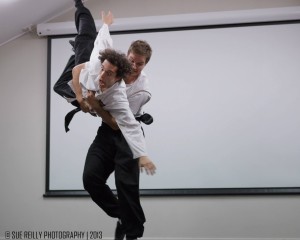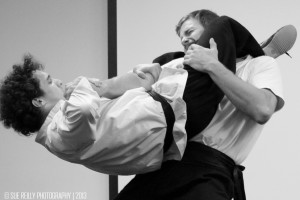How to be a Good Training Partner
A good training partner works at the right balance for his partner. By this I mean he/she doesn’t simply think about himself and ignore his partners needs. That would be an ego driven person. If practising countering techniques for example, there is little benefit if the ‘attacker’ uses no intent or commitment in his attack. I sometimes see students holding their arm out as if it’s a punch or pulling up way short of the target. Not useful!
Similarly, if there is no subsequent resistance to the counter defense it delivers no reality to the practitioner. In real life, an attacker WILL commit, WILL resist and that is what the practitioner should be prepared for. However, if we play the attacker with 100% commitment and resist as much as possible, we stop the practitioner from being able to learn or practice the technique. This is often the ego not wanting to ‘lose’ even within the training environment. I usually advise for the defender to include the softening technique in this case 😉
Ironically, in real life, an attacker often does not have the opportunity to react and resist as they aren’t necessarily expecting the technique being applied. Also, for techniques to fully work, the softening and commitment to the technique is required against a real attacker. When we are lessening or controlling our technique to avoid injuring our training partner, it is hardly fair for that partner to apply inordinate resistance.
Here’s a suggestion for finding a balance between accommodating and resisting. Start at a slow speed and with no resistance and gradually build up both as your partner successfully completes the technique. Aim to work up to a point of reasonable speed and resistance where the technique is successfully done approximately two thirds of the time. That is, your partner should ‘fail’ 3 or 4 times out of every ten attempts as a result of your speed or resistance. Once the success rate improves, then incrementally increase the speed, resistance and complexity. Next stage would be to introduce either multiple techniques and/or free sparring and seeing if the techniques or principles hold. Lastly, building up the pressure, ie more contact, multiple attackers, weapons, or simply random unexpected attacks.
Only if this last stage is dealt with successfully should a practitioner feel confident to use their skills in ‘real life’. Even then, there is a need to maintain your skills, fitness and awareness to keep on top of your game.
So, what stage are you at in your training? And where would you like to be? And how are you going to get there?


